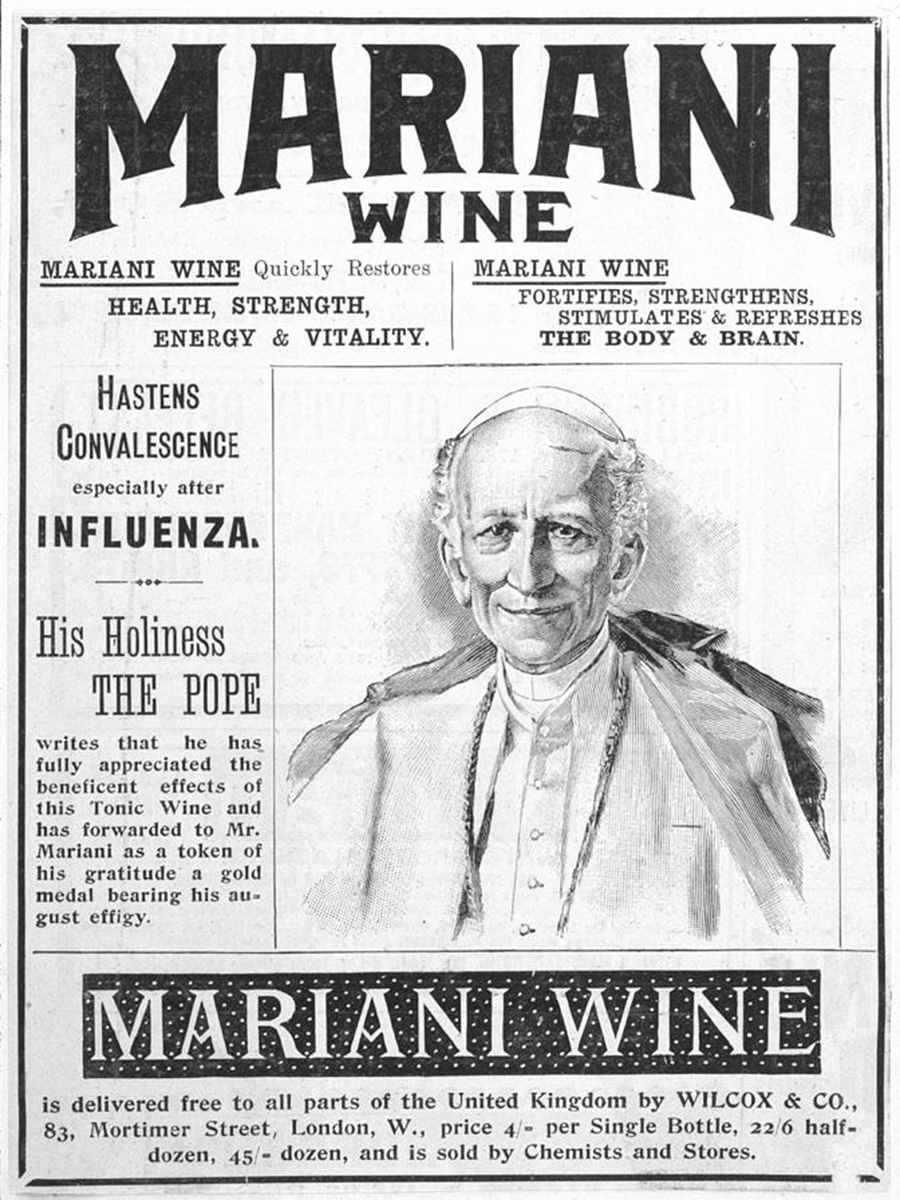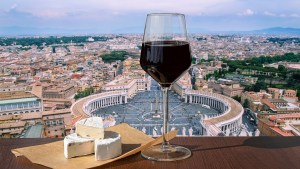Is it possible to use the pope’s likeness in a secular advertisement? We’d say no. In some of Rome’s boutiques, fashion designers and shoe manufacturers do occasionally boast of having made this or that liturgical garment for the pontiff, or of having supplied his ice cream. However, such claims remain very discreet and confined to the small Roman milieu.
Today more than ever, the image of the Bishop of Rome is closely guarded to avoid any commercialization. Consider, for example, the scandal caused by the provocative advertising of the Italian clothing group Benetton in 2011, in which Benedict XVI was shown kissing the Grand Imam of Al-Azhar on the mouth. At the Vatican’s request, an army of lawyers sprang into action, and the advertisement was withdrawn almost immediately.
Now in the age of AI, care and professionalism is more important than ever.
But in other times, popes have been known to accept to advertise a brand. A very surprising example occurred during the pontificate of Leo XIII (1878-1903), when the pope became —somewhat in spite of himself — the face of Mariani wine.
A wine with coca
This medicinal wine, invented by Angelo François Mariani — a Corsican pharmacist — was first marketed in 1871. It was made with an original recipe: coca leaves macerated in Bordeaux wine. The entrepreneur presented his elixir as a tonic and stimulant against “influenza, nervousness, anemia, insomnia, impotence, melancholy, and various problems of the stomach, throat, and lungs.” Modest claims …
This type of recipe in itself was not surprising for the time: Medicinal wines were very popular in those days, especially with the French. Consumers used them to combat all kinds of ailments.
To promote these beverages, the entrepreneurs of the time — some of them talented charlatans — often resorted to advertising, which was displayed in public squares or in the countless newspapers of the day.
Vin Mariani contained large quantities of cocaine, but not in the form of cocaine hydrochloride — the kind that produces today’s damaging white powder. It was dissolved in alcohol, which greatly limited its more negative effects. This enabled Angelo François Mariani to claim that his beverage was excellent for one’s health, without ever leading to a cocaine addiction, then known as “cocainism.”
An advertising genius
More than his recipe, it was Mariani’s advertising genius that set him apart, as American historian William Helfand pointed out in an article published in 1980 in the Pharmacy in History.
For publicity, the Corsican relied mainly on testimonials. Long before the Internet and influencers, he managed to collect thousands of laudatory comments from important figures in the establishment by offering them cases of wine: actors, men of letters, presidents, kings … The recipients usually sent a signed message of praise, which Angelo compiled in “Mariani Albums” to promote his elixir.
Among the celebrities he recruited in this way were Émile Zola, Marshal Pétain, Thomas Edison, Sarah Bernhardt, Jules Verne, and US President William McKinley. Composer Gabriel Fauré wrote a piece of music in praise of the beverage, and poet José-Maria de Heredia apologized for not being able to add the inventor’s name when he had “vin de coca” added to the definition of “coca” in the French Academy’s dictionary.
3 Popes extolled the drink’s virtues
But Mariani’s most remarkable “coup” was undoubtedly the recommendations he received from three Pontiffs: Leo XIII, Pius X, and Benedict XV.
Leo XIII clearly appreciated the cordial, to the point of thanking its inventor by awarding him a gold medal for “supporting the ascetic retreat of His Holiness.” This was a godsend for Mariani, who never failed to include the award in his advertisements, taking advantage of the astonishing longevity of the pontiff. (Pope Leo XIII was the Bishop of Rome from 1878 to 1903, and died at the age of 93 years, four months, and 18 days.)
Mariani wine helped the pontiff combat insomnia, and he continued to drink it every day until his death. He also passed on his preference to his successors, Pius X and Benedict XV.
Cardinal Pietro Gasparri, the latter’s Secretary of State, even sent a letter to Mariani in which “the Holy Father vows that weakened health will always find in the properties of the tonic of your house a principle of vigor and strength.”
The success of Vin Mariani ceased after the war, and Pius XI, successor to Benedict XV, did not praise its merits. On the other side of the Atlantic, however, an emulator of Vin Mariani enjoyed dazzling success: Coca-Cola, directly inspired by the success of the Corsican creation, which successfully abandoned alcohol during Prohibition.
Instead of the pope, that famous drink chose another religious figure for promotion: St. Nicholas … also known as Santa Claus.





